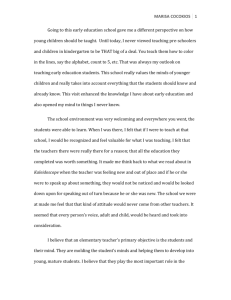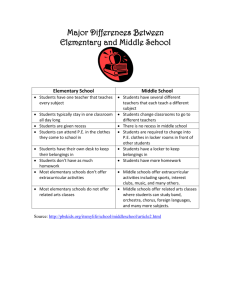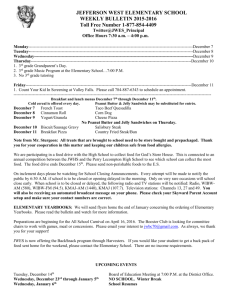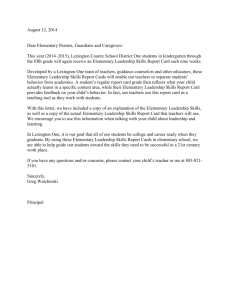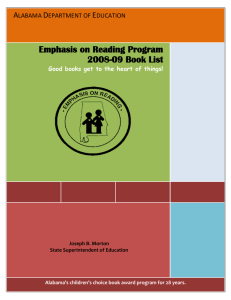Guidelines for the Math 113 Instructor beginning January, 2011
advertisement
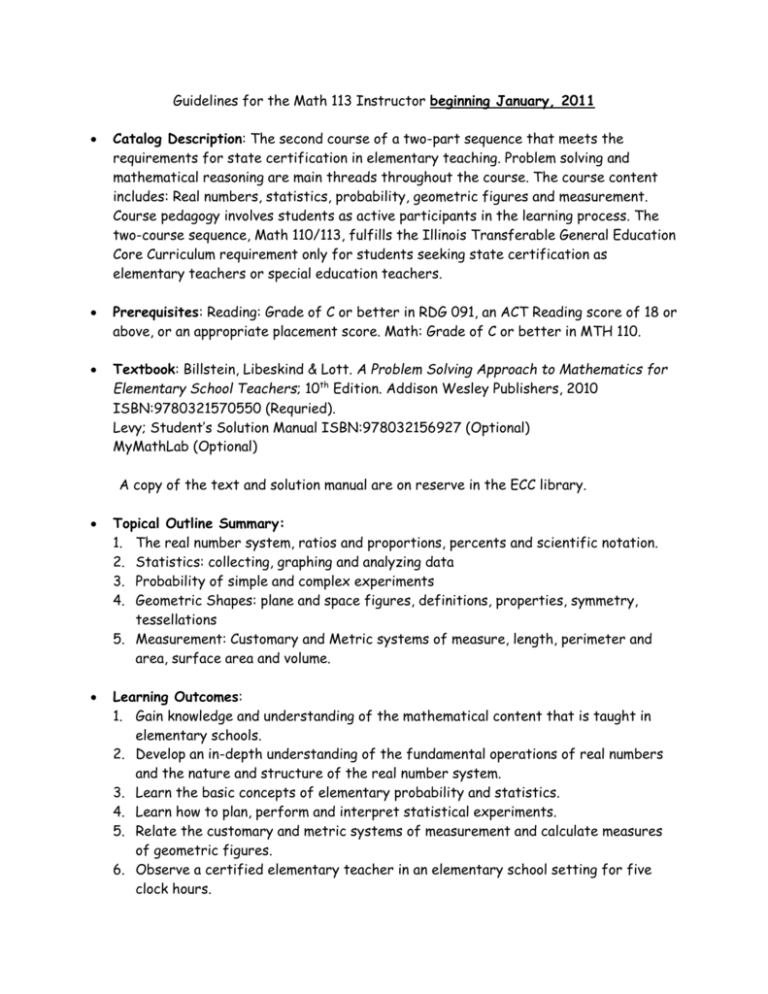
Guidelines for the Math 113 Instructor beginning January, 2011 Catalog Description: The second course of a two-part sequence that meets the requirements for state certification in elementary teaching. Problem solving and mathematical reasoning are main threads throughout the course. The course content includes: Real numbers, statistics, probability, geometric figures and measurement. Course pedagogy involves students as active participants in the learning process. The two-course sequence, Math 110/113, fulfills the Illinois Transferable General Education Core Curriculum requirement only for students seeking state certification as elementary teachers or special education teachers. Prerequisites: Reading: Grade of C or better in RDG 091, an ACT Reading score of 18 or above, or an appropriate placement score. Math: Grade of C or better in MTH 110. Textbook: Billstein, Libeskind & Lott. A Problem Solving Approach to Mathematics for Elementary School Teachers; 10th Edition. Addison Wesley Publishers, 2010 ISBN:9780321570550 (Requried). Levy; Student’s Solution Manual ISBN:978032156927 (Optional) MyMathLab (Optional) A copy of the text and solution manual are on reserve in the ECC library. Topical Outline Summary: 1. The real number system, ratios and proportions, percents and scientific notation. 2. Statistics: collecting, graphing and analyzing data 3. Probability of simple and complex experiments 4. Geometric Shapes: plane and space figures, definitions, properties, symmetry, tessellations 5. Measurement: Customary and Metric systems of measure, length, perimeter and area, surface area and volume. Learning Outcomes: 1. Gain knowledge and understanding of the mathematical content that is taught in elementary schools. 2. Develop an in-depth understanding of the fundamental operations of real numbers and the nature and structure of the real number system. 3. Learn the basic concepts of elementary probability and statistics. 4. Learn how to plan, perform and interpret statistical experiments. 5. Relate the customary and metric systems of measurement and calculate measures of geometric figures. 6. Observe a certified elementary teacher in an elementary school setting for five clock hours. Classroom Observation: It is strongly recommended that the students observe a certified teacher in an elementary classroom (grades 1-8) for 5 clock hours and then write a report of their visit. The observation must take place the semester the student is enrolled in Math 113 and the same hours may be used for another course such as EDN 211. Students may contact an elementary school on their own or Lily Grohs, the Coordinator of Education Placement Service, at ECC. See Lauren Anderko for more details. Notes for Instructors of Math 113 – Sections that should be covered in class Chapter 7: Section 7.4 – Real numbers and solving equations in one variable Chapter 8: Proportional Reasoning, Percents and Applications Sections 8.1, 8.2 and simple interest in Section 8.3 Chapter 9:Probability Sections 9.1, 9.2, 9.3, 9.4 and 9.5 Chapter 10: Data Analysis/Statistics: An Introduction Sections 10.1, 10.2, 10.3, and 10.4 (omit 10.5) Chapter 11: Introductory Geometry Sections 11.1, 11.2, 11.3, and 11.4 (omit 11.5) Chapter 13: Concepts of Measurement Sections 13.1, 13.2, 13.3, 13.4 and 13.5 If time permits, choose additional topics from Chapter 12- Construction, Congruence and Similarity or Chapter 14 – Motion Geometry and Tessellations


